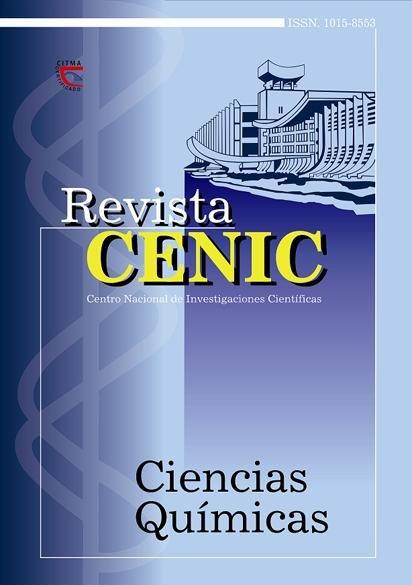Coefficient calculation algorithm of diffusion of water in Cuban natural zeolites
Abstract
In the present paper the study of the kinetics of water adsorption at three of the more investigated Cuban natural zeolites is described. In the introductory part, the necessity, importance and the novelty of this study are argued. The calculation of transfer and diffusion water vapor coefficients in this materials were obtained using the elements of the substance transfer theory developed by Ruthven for the
case of the porous materials and the theory of the volumetric filling of micropores developed by Dubinin. The graph-numeric algorithm was developed for the area of prevalence the non-specific interactions of Dubinin's model. This calculation method was applied to the study of the vapor water adsorption kinetics by the zeolites from Tasajera, Castilla and Palmarito deposits in their different cationic forms. The experimental data was obtained by means of a classic static volumetric device. The water vapor transfer and diffusion coefficients of the studied samples were in the same order of the literature reported for materials of this nature. In the calculations of coefficients, the granulometric radius of the samples were used instead of the radius of the zeolitic crystal in agreement with the different reported approaches about the restrictive stage of the intracristaline diffusion for the studied kinetic process.

Downloads
Published
How to Cite
Issue
Section
License
Copyright (c) 2001 Copyright (c) 2001 Revista CENIC Ciencias Químicas

This work is licensed under a Creative Commons Attribution-NonCommercial-ShareAlike 4.0 International License.
Los autores que publican en esta revista están de acuerdo con los siguientes términos:
Los autores conservan los derechos de autor y garantizan a la revista el derecho de ser la primera publicación del trabajo al igual que licenciado bajo una Creative Commons Atribución-NoComercial-CompartirIgual 4.0 que permite a otros compartir el trabajo con un reconocimiento de la autoría del trabajo y la publicación inicial en esta revista.
Los autores pueden establecer por separado acuerdos adicionales para la distribución no exclusiva de la versión de la obra publicada en la revista (por ejemplo, situarlo en un repositorio institucional o publicarlo en un libro), con un reconocimiento de su publicación inicial en esta revista.
Se permite y se anima a los autores a difundir sus trabajos electrónicamente (por ejemplo, en repositorios institucionales o en su propio sitio web) antes y durante el proceso de envío, ya que puede dar lugar a intercambios productivos, así como a una citación más temprana y mayor de los trabajos publicados (Véase The Effect of Open Access) (en inglés).













